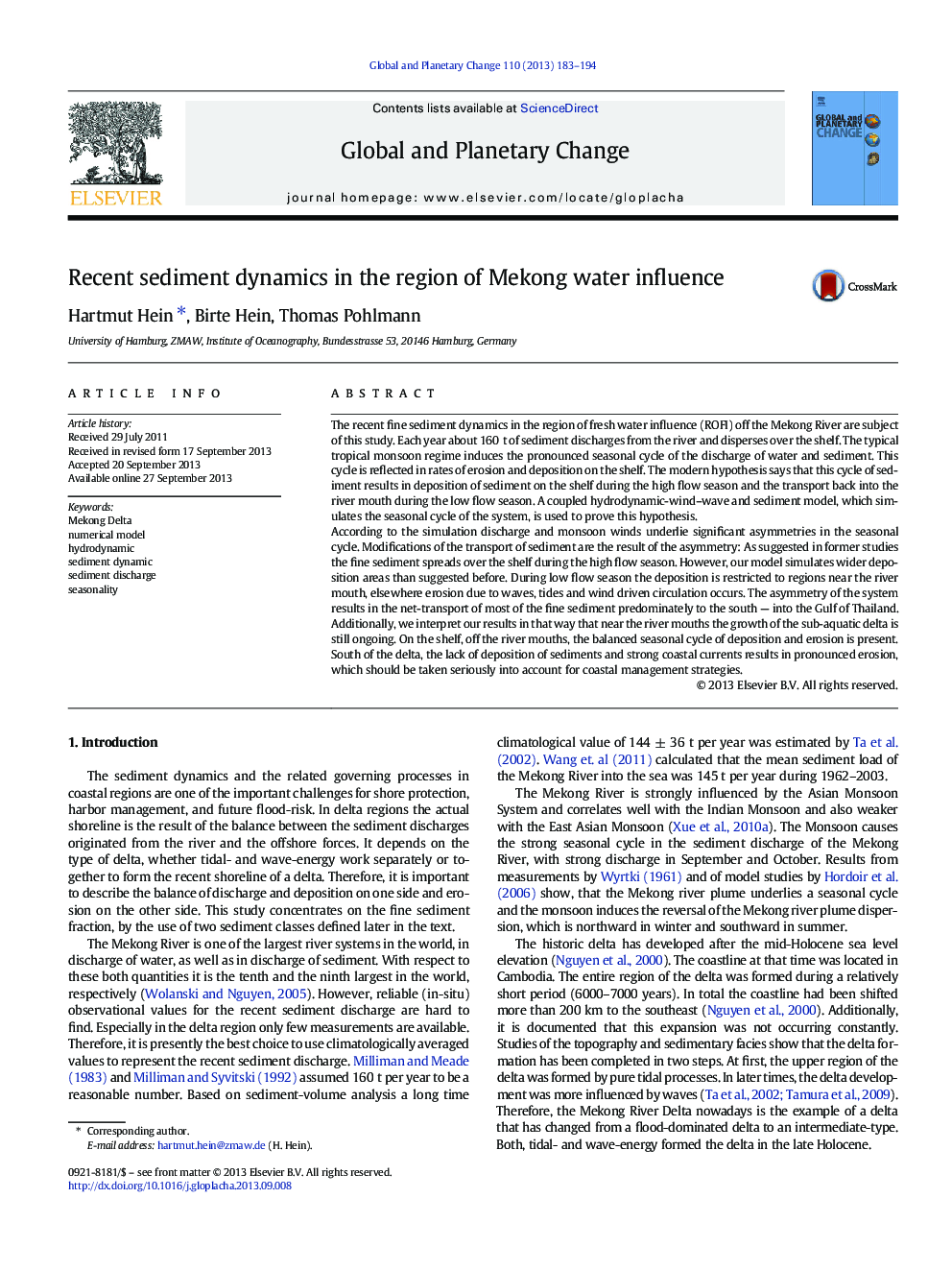| Article ID | Journal | Published Year | Pages | File Type |
|---|---|---|---|---|
| 4463483 | Global and Planetary Change | 2013 | 12 Pages |
•New concept of recent sediment dynamics of the Mekong Delta.•Sediment pathways are simulated by means of three-dimensional modeling.•Regions of erosion and deposition off the Mekong.•Intra-annual (in-)balance of sediment off the Mekong.
The recent fine sediment dynamics in the region of fresh water influence (ROFI) off the Mekong River are subject of this study. Each year about 160 t of sediment discharges from the river and disperses over the shelf. The typical tropical monsoon regime induces the pronounced seasonal cycle of the discharge of water and sediment. This cycle is reflected in rates of erosion and deposition on the shelf. The modern hypothesis says that this cycle of sediment results in deposition of sediment on the shelf during the high flow season and the transport back into the river mouth during the low flow season. A coupled hydrodynamic-wind–wave and sediment model, which simulates the seasonal cycle of the system, is used to prove this hypothesis.According to the simulation discharge and monsoon winds underlie significant asymmetries in the seasonal cycle. Modifications of the transport of sediment are the result of the asymmetry: As suggested in former studies the fine sediment spreads over the shelf during the high flow season. However, our model simulates wider deposition areas than suggested before. During low flow season the deposition is restricted to regions near the river mouth, elsewhere erosion due to waves, tides and wind driven circulation occurs. The asymmetry of the system results in the net-transport of most of the fine sediment predominately to the south — into the Gulf of Thailand. Additionally, we interpret our results in that way that near the river mouths the growth of the sub-aquatic delta is still ongoing. On the shelf, off the river mouths, the balanced seasonal cycle of deposition and erosion is present. South of the delta, the lack of deposition of sediments and strong coastal currents results in pronounced erosion, which should be taken seriously into account for coastal management strategies.
